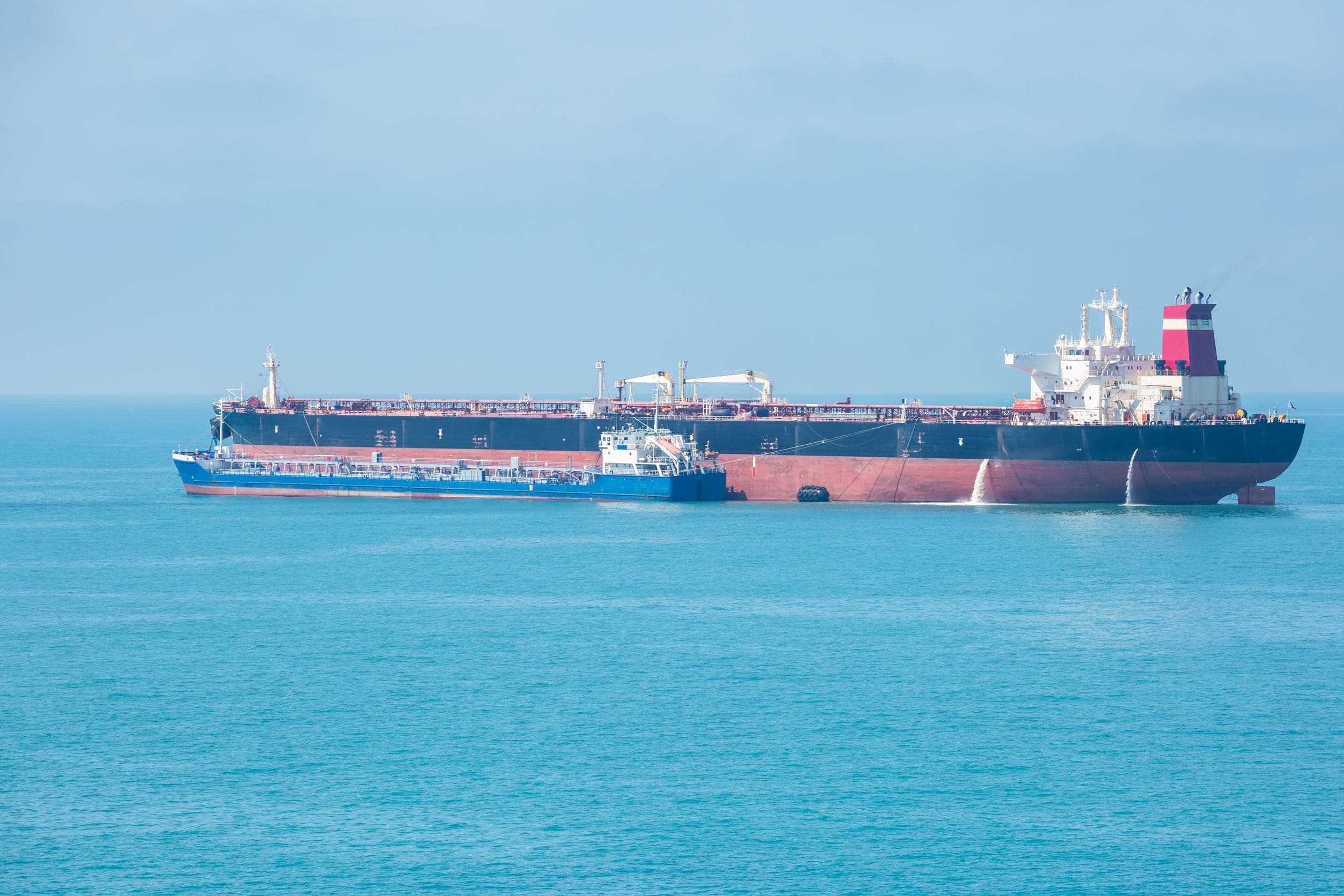Ship-to-ship (STS) transfer is becoming increasingly common throughout the shipping industry. It has been an important part of the oil industry for some time, providing the logistical backbone for large swathes of the global oil trade, but STS transfers in oil have become even more important of late. This rising prominence of STS transfers across the maritime industry is evidenced by the Malaysian ship-to-ship specialists KA Petra’s recent $180 mill agreement to build the world’s largest STS transfer docking station in Malaysia, expecting to tap into the growing STS transfer industry in the region and build a global trading hub.
There are many factors behind the growth in STS transfers, but few are as important as flexibility. Allowing vessels that carry liquid cargo to transfer offshore in essence means that VLCCs that have multiple unload points throughout their journey can be more economical, and their cargo can be delivered to ports or via routes that cannot accommodate a ship of that size. STS transfer is an essential and widely used part of efficient and cost-effective transport of oil all over the world.
STS transfers come with their unique challenges, though. Some are obvious; STS transfer requires proper coordination, equipment and approvals, which can become prohibitively complex when coupled with bad weather and the physical stresses of operating equipment between two moving ships. Others are perhaps easier to overlook, such as the significant increase in risk that occurs when crews don’t have the relevant expertise, or have inappropriate or poor-quality equipment. The risk of fire or environmental pollution associated with a poorly planned STS transfer, or one using substandard or inappropriate equipment, can be very high.
In 2018, an incident involving a faulty hose raised serious questions about the safety and operability of STS transfer across the industry. In that incident, a faulty hose ruptured and sprayed oil on deck and overboard. It was only the quick reactions of the crew that contained the spill, resulting in only a minimal amount of oil entering the ocean rather than an environmental disaster that would have posed a significant risk to life.
The UK P&I Club subsequently investigated the accident, and issued a recommendation stating that all cargo hoses must be fit for purpose and provided with valid records of test and inspection. It had transpired that the hose had not been tested for over two years – twice as long as is recommended by industry bodies – and had visible signs of pressure damage that neither the STS service provider nor the crews had properly checked for.
That incident highlighted the clear need for operators, owners, crew and other parties to ensure that the process is conducted safely and efficiently. It also illustrates the need for suppliers to ensure that they are helping to raise standards across the industry by contributing their expertise as well as their products.
In any oil transfer, be it on land or sea, equipment must be efficient and fit for purpose. It must be easy to operate efficiently for the crew that use it, it must be easy to operate safely, and it must exhibit resilience in the face of often extreme environmental challenges.
As hoses are perhaps the most important link in the STS transfer chain, this raises the issue of standards; there is no universally agreed upon single type of hose for use in STS transfers. Instead there are several standards used to qualify hoses that can be used in the process. These vary in quality, efficiency, and cost.
Typically, the EN 1765 standard is used to qualify STS hoses. However, Trelleborg recently launched a new STS transfer solution to enhance safety and operability in the rapidly evolving sector – the KLELINE STS hose, which is qualified to the GMPHOM 2009 guidelines for marine application. This offers increased resilience and service life beyond what is typical.
These guidelines guarantee a higher standard of manufacturing as each hose goes through a complete factory acceptance testing program, which includes hydrostatic, vacuum, adhesion and bending tests to ensure a superior level of certainty and confidence when it comes to STS transfers. This is in line with best practice and regulations, and provides more accurate performance predictors including service life and resistance.
Capital expenditure for this higher specification ensures an increase in operations, a decrease in maintenance, and ultimately fewer expensive replacements over the life of a project. This longer service life helps reduce operational expenses while reducing the environmental impact of manufacturing and fitting replacement hoses.
KLELINE STS hoses consist of two carcasses made of steel cables. The inner carcass in this dual carcass design provides resistance to the internal pressure, up to five times the rated working pressure. The outer carcass provides resistance to the stresses and loads inherent in STS transfers and protects from external environmental challenges – while preventing leaks. This technology, based on technology originally developed for truck tires, enables the hose to withstand accidental kinks or crushing forces that can occur due to the intensity of the forces involved and the nature of carrying out a complex process across two ships while at sea.
The hose also demonstrates the value of Trelleborg’s unique nippleless design. In a standard nipple hose design, there is a metal connector in between different sections of the hose – which creates additional wear and pressure, and therefore risk of failure. In contrast, Trelleborg’s design has no stiff metal connectors between sections of the hose, and is thus more flexible while the continuous inner layer and integrated Gasket create a perfect sealing solution. The design means that there is no need for gaskets at each connection, which increases the simplicity of installation alongside the benefits in longevity and safety that come with a hose that can withstand stresses and strains for longer.
It is crucial that we continually evaluate the long-term effectiveness of oil transfer solutions as the industry evolves, at every part of the value chain and alongside operability. As suppliers, we have a duty to ensure that we are playing our part in raising standards across the industry by providing our technical and operational expertise alongside our products.
Hoses are one of the areas in which we have significant expertise, and one of the areas in which a higher specification product can cut operational expenditure, reduce the need for maintenance, increase operability, and lesson the number of costly replacements over the lifecycle of a project – not to mention reduce the risk of accident – despite an initially increased capital expenditure. Trelleborg offers this expertise as part of a comprehensive support service based on 45 years of experience supplying oil and marine hoses, which spans the lifecycle of a project. As a global company with local presence across the world, we are able to work closely with our customers to form the best solutions for their applications and be there when they need us.
Nicolas Landriere is product manager for Trelleborg's oil hose applications, providing technical support to new and existing customers and expert advice throughout the various stages of each project. As a technical specialist for hoses and offshore offloading applications, Nicolas also contributes to the development of new products.
Nicolas joined Trelleborg 12 years ago, to deliver technical support for projects. Since then, he has taken on various roles within the same scope, working as both a project manager and sales manager, offering solutions and technical support on complex projects around the world. He is currently product manager for all of Trelleborg’s oil applications







